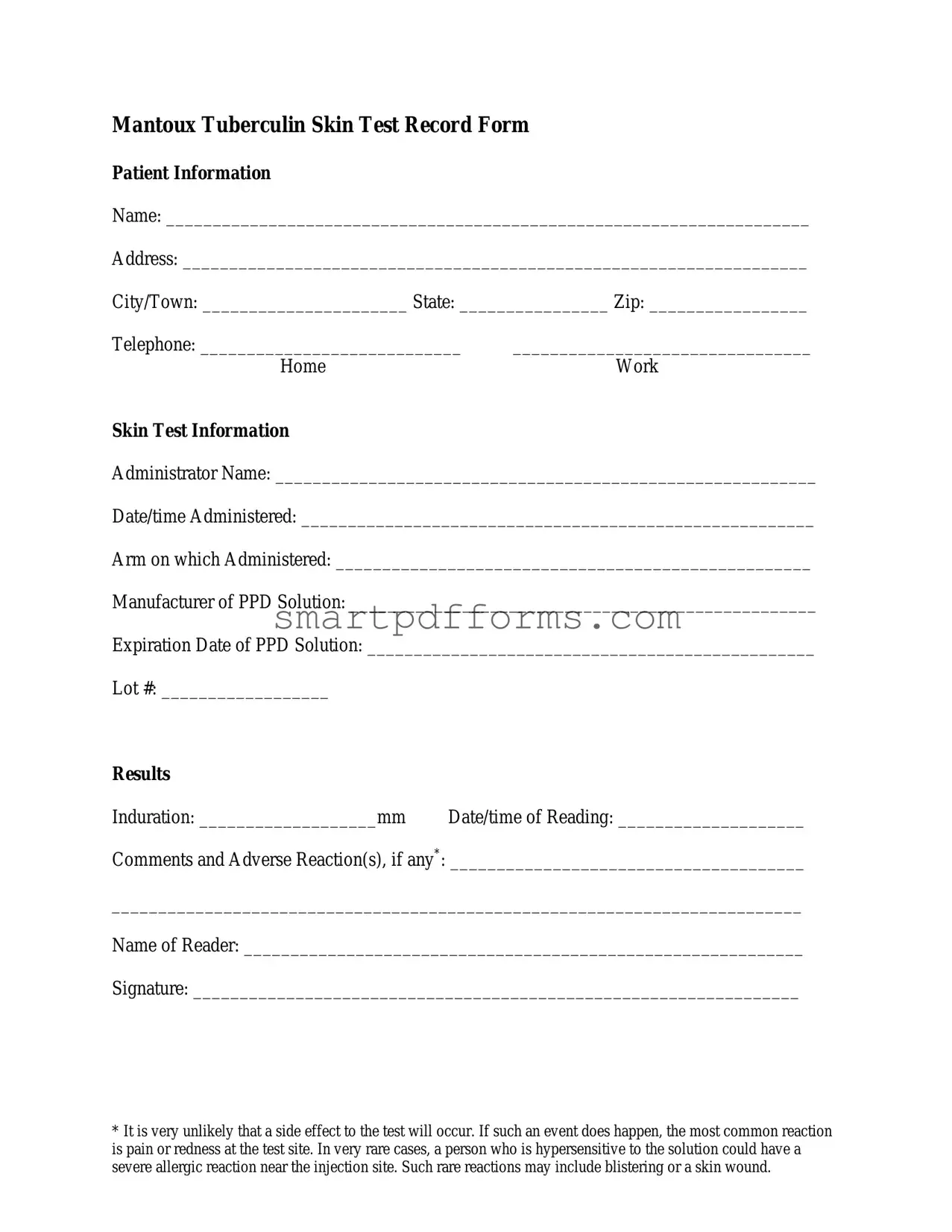Blank Mantoux Test Report Format PDF Template
The Mantoux Test Report Format form serves as an official document for reporting the results of tuberculosis (TB) skin tests, especially tailored for students. It outlines a structured format for documenting details such as student name, identification, test dates, health care provider signatures, and test outcomes, including options for indicating positive or negative results for two separate TB skin tests. For those with a history of positive PPD tests or BCG vaccination, alternatives like chest x-ray results or physician statements are accommodated. To ensure your health records are up-to-date, we invite you to fill out the form by clicking the button below.
Make This Document Now
